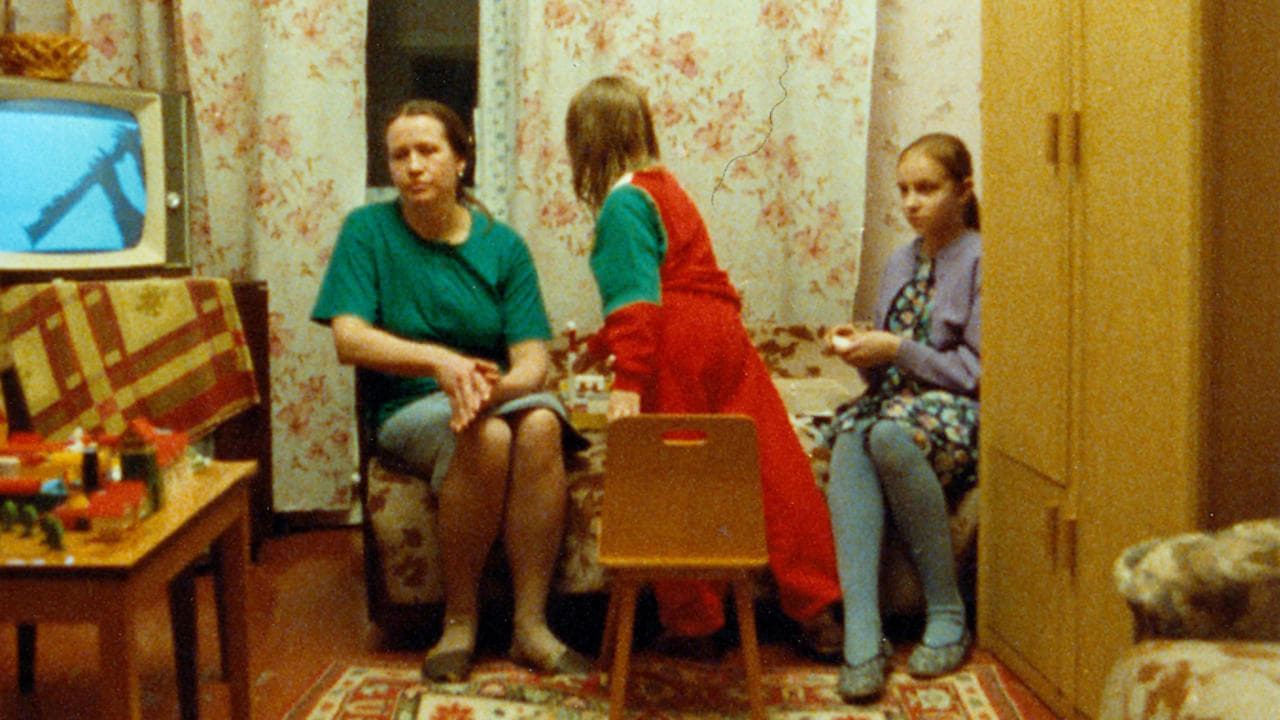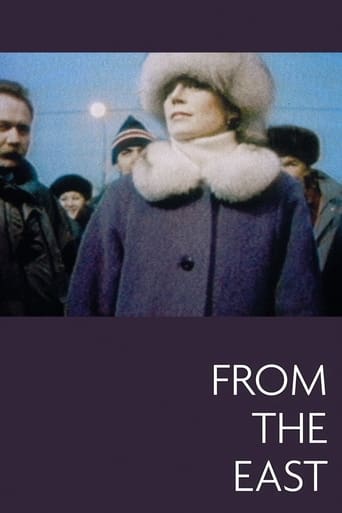



Masterful Movie
It's an amazing and heartbreaking story.
Mostly, the movie is committed to the value of a good time.
View MoreAmazing worth wacthing. So good. Biased but well made with many good points.
View MoreI love movies, but often when watching films it's hard not to feel jaded. There are so many times I've watched a film and found it decent but boring, or even with good movies seen all the places where the director has straight up lifted pieces from other works. What a pleasure it can be then to watch a film from a director like Akerman, someone who doesn't care for the rules of cinema, straight up smashing them for her own pleasure. D'est is a travelogue, a sort of moving slideshow of images taken as directed by Akerman in Germany, Poland and Russia after the collapse of the Soviet Union. Not that you would know this if you just stumbled across the film. With nothing, not even a title card to explain what is going on, Akerman presents these images of people, sometimes in their own homes, but mostly in public spaces, usually waiting for the bus. There are no markers except the clothing to place us, and little in the way of signage to tell us where we are. There is no narration and the little dialogue said is in various different languages, untranslated. Most of the time what Akerman chooses to show us is people waiting in line for the bus, interacting with the camera by pointing at it or laughing at it, or on various occasions screaming at the camera until it rolls indifferently on. It is like the opposite of everything we are told is cinematic, it is just every day non-actors going about their lives, usually in moments of transition that are likely part of their routine and not something they think about too much. And somehow it is the most cinematic thing of all, to watch these people going about their business. It is an odd film, completely atypical, but if you surrender yourself to the images you will find yourself in a sort of meditative trance as you contemplate the people and their surroundings as documented by Akerman.
View MoreYears ago I discovered this film from reading an interview with Gus Van Sant where he mentions "D'Est" as an influence. When learning of it's DVD release date in October 2009, I was very anxious. I'm glad I watched "D'Est" because (even without the political context) it brings the background of everyday existence to the foreground. I'm not sure of the logistics with the tracking shots in public places among crowds of people, but it can be very surreal...in a positive manner. "D'Est" is for those seeking a lyrical, poetic film experience that is 100% visual. Fans of Godfrey Reggio's "Qatsi Trilogy" and Robert Gardner's "Forest of Bliss" will be delighted, because no narration, location titles, or dialogue are featured.
View MoreChantal Akerman's haunting masterwork is not for those looking for clearly drawn narratives and characters, but for those willing to commit two hours to observation and contemplation, D'EST could be an extremely rewarding experience. There are moments when the poetic minimalism of this perceptive film feels like epiphany, but passive viewers may walk away empty-handed. It could be described as an existential meditation on memory and endurance, and while that may not sound exactly riveting, D'EST is, nevertheless, film-making of the very highest order, a work of art expanding the boundaries of the language of cinema.
View MorePersonal "slideshow" album from the director's journey in Eastern Europe and Russia. Well executed; pictures are precisely framed by fixed camera with occasional dolly. (There is only one shot with panning, the shot in a big station) Because nothing happens in a landscape sequence during two hours, the piece is more suitable to be viewed in a gallery or in a public place than in a theater. Conceptually, it is reminiscent of Erik Satie's Furniture Music.
View More